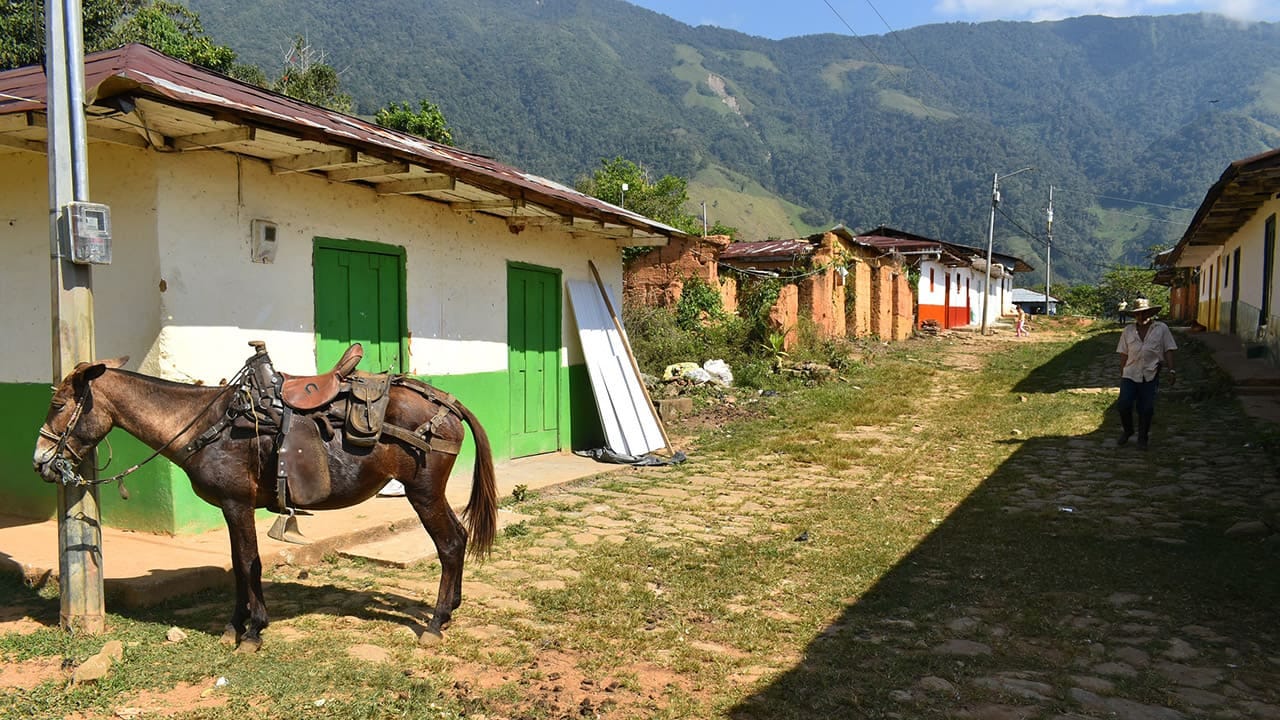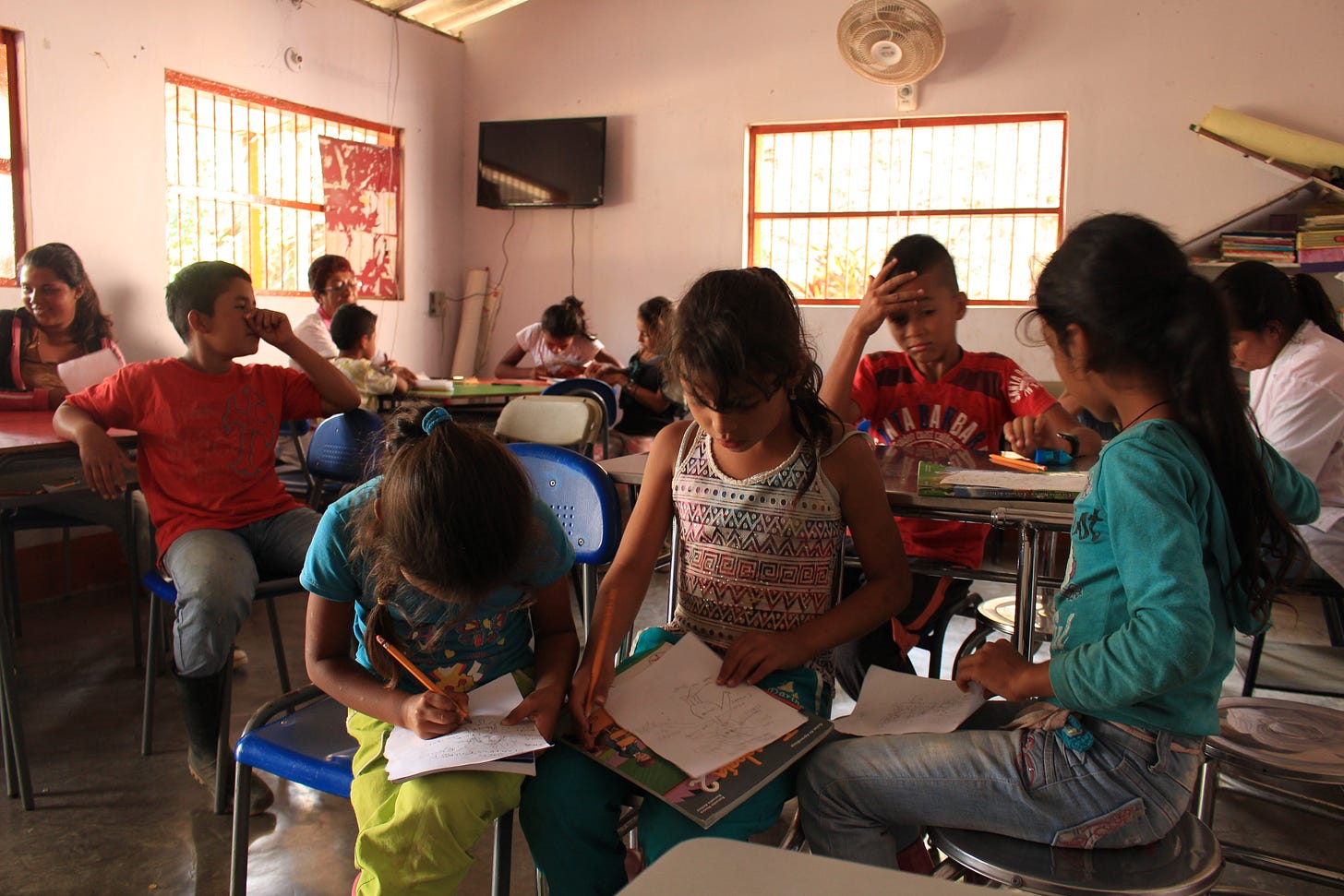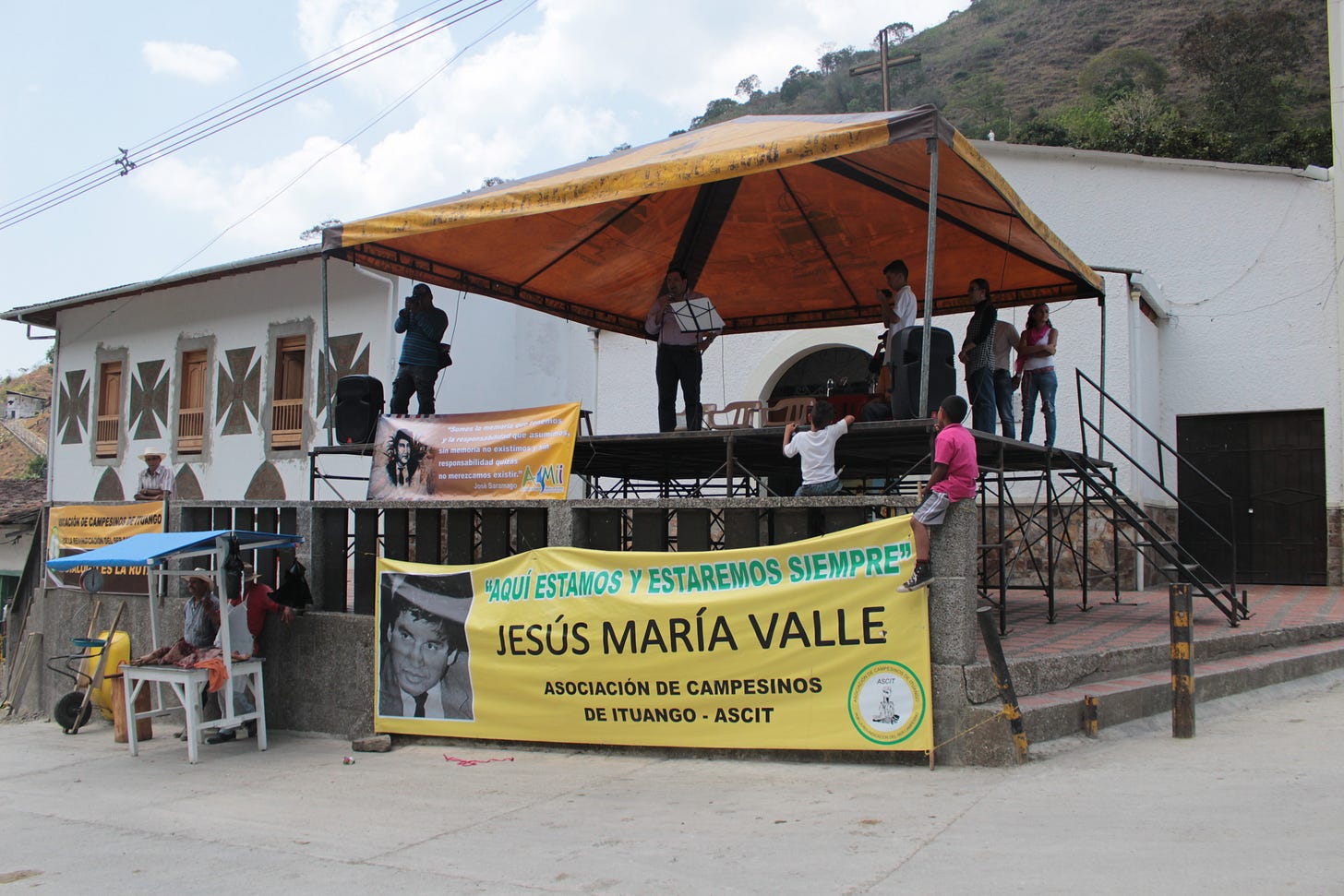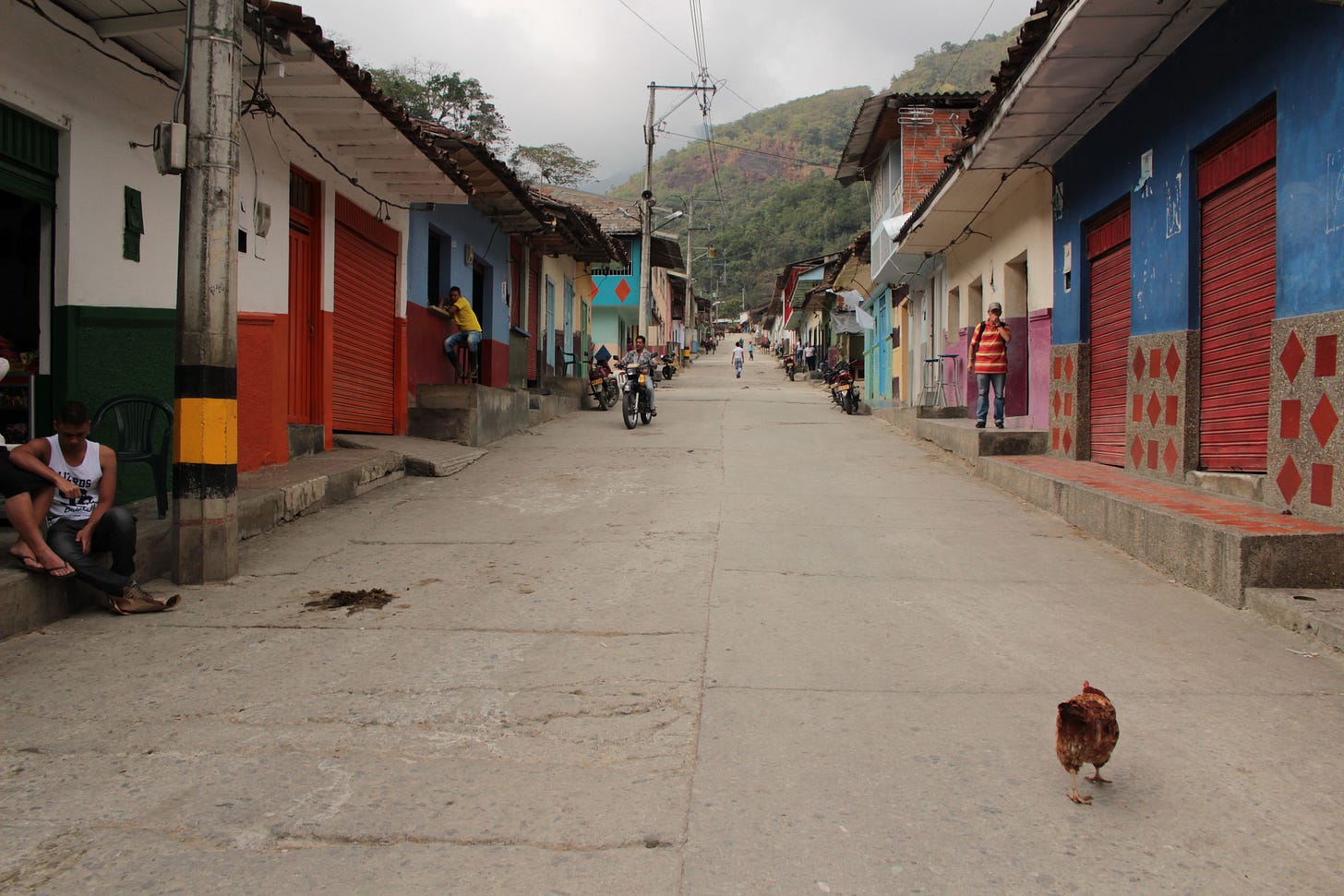What Uribe's conviction, the search for truth, and "peace" mean to a survivor of one of Colombia's most infamous massacres
Justice, like peace processes and "truth", is often imperfect. That doesn't make it less valuable

“You shouldn’t be here. Especially you, the one who taught me how to read and write. You can’t be here. Go. I will take responsibility for it.”
These were the words that saved Cristina Monsalve , a young teacher originally from the municipality of Ituango, as she escaped violence during the El Aro massacre.
Over five days in October 1997, paramilitary members of AUC devastated the small village of El Aro. They killed 17 civilians, raped women, and burned homes. More than 700 people fled, as they were forcefully displaced.
It would come to be known as the El Aro massacre. It remains one of the most harrowing episodes in the country’s armed conflict.
El Aro is located in a rural region of northern Colombia. It is remote and isolated, and during that period, reaching El Aro required a two day journey by foot, by boat and by mule. It is also a region that has long been neglected by the federal government in Bogotá.
Its remoteness, inaccessibility and richness in natural resources, made it a strategic area for armed groups that have long fought to control it. During most of Colombia’s 53-year civil war, it was controlled principally by the now-demobilised left-wing guerilla group the Revolutionary Armed Forces of Colombia(FARC).
The presence of FARC forces, as well as leftist fighters from the National Liberation Army (ELN), however, also meant that right-wing paramilitary forces, fighting on the side of the government during the civil war, often clashed with guerilla groups in the region.
The civil population was often caught in the crossfire. They were also intentionally targeted with brutal violence as the armed groups fighting for control of the region accused them of being sympathizers or supporters of opposing forces.
This was also the case of this village, which was ravaged by the now-demobilised right-wing paramilitary groups Autodefensas Unidas de Colombia (AUC).
The AUC is arguably the most violent armed group in Colombian history. According to the National Centre for Historic Memory (NCHM), the AUC are responsible for the greatest number of civilian killings during the history of the country’s armed conflict, more than twice as many as all left-wing guerrillas combined.
They routinely assassinated union leaders, politicians, community leaders and anyone else they perceived as leftist, or who they suspected of having ties to leftist movements.
The AUC committed more massacres than any armed group during the civil war — 1,166 in total, according to the NCHM..
The group demobilized in 2006. However, the process has been criticized by Human Rights Groups, as it seemingly favored impunity of the armed actors over retribution for their victims.
In addition, many of the “demobilized” AUC fighters simply reformed new paramilitary structures and returned to criminality, setting the stage for what would later become the Gaitanista Army of Colombia (EGC), called the “Clan del Golfo” by the government.
The EGC is now the largest and most powerful criminal armed group in the country.
The conviction of former president Uribe in Colombian courts of bribing witnesses and fraudulent judicial processes as part of investigations in his link to these right-wing paramilitary, has sparked hope that a decades-long legal impunity in the country, especially in regions impacted by the right-wing paramilitary, might finally be coming to an end.
As part of the historic peace deal between the government and FARC forces, Colombia’s Peace Court has made documenting these abuses a principal goal. The stories of these victims must continue to come to light.
El Aro massacre
On weekends, the teachers from the surrounding hamlets of El Aro village would gather in the village, sharing accommodation in a designated house known as ‘The Teacher’s House.’
That’s where Christina found herself — playing cards with other teachers — on the Saturday morning when the massacre began.
She first realized something was wrong when she heard the sounds of children screaming and crying. Shortly afterward, she saw FARC guerrillas fleeing toward the mountains. When the AUC fighters who had routed the guerrillas finally stormed into the village, they dragged the teachers outside and forced them to lie face down on the ground with their hands tied behind their backs.
Their faces pressed into the dirt, the paramilitaries began interrogating the teachers about the FARC. Frustrated that the teachers had no usable intelligence, they began to beat one of the older teachers. Cristina intervened, begging the AUC not to kill her colleague. The AUC fighter used his rifle to knock her to the ground instead.
The paramilitaries then gathered the entire village — children, farmers, teachers — into the town square and used them as human shields while firing into the mountains, trying to hit the FARC.
The leader of the AUC brigade, a who went by ‘Junior’, took Cristina away, beat her, and threatened to rape her. According to Cristina, he seemed to know everything about her family, and threatened to kill her parents if she didn’t do exactly as he said. She was eventually released.
Another less fortunate teachers was raped by multiple paramilitaries as part of attempts to intimidate the village. Cristina recalls hearing in horror and fear, together with the other teachers, the screams and cries of the teacher as it happened.
‘We had to listen when they hacked people with machetes and rubbed salt into their wounds,” she said. “They would bring people through who they supposedly believed were guerrillas, people we knew weren’t. They would lift up the whole part of their bodies like this, pour salt on them, and leave the doors open so we would see. They were muleteers. Humble people. Hardworking people. It was very harsh.’
A few hours later the paramilitaries came for her again, this time making her cook 535 steaks for their people. As she cooked the food, working by candlelight, a younger AUC member recognized her.
He was a former student. Christina had taught him to read and write, as teacher training she had undergone in a prison the year before.
‘ I didn’t recognize him’, Cristina said, ‘but he knew who I was.’ He said to Cristina: ‘You shouldn’t be here. Especially you, the one who taught me how to read and write. You can’t be here. Go. I will take responsibility for it.’
As Christina left the impromptu kitchen, she learned one of the teachers had managed to get a deal with the paramilitary to let the teachers leave El Aro. They were told to leave the village by 5 am the next day.
To her horror, Cristina was not allowed to escape with the rest of the teachers. She recalls watching them leave as the paramilitary leader kept her behind.
‘I stayed there, I even sat down on the grass and started to pray. I did nothing else. Just prayed. When they called him to take a call, he told me to wait there. Then a young guy came up to me and said, ‘Teacher, if you see can, run. Because if not, this guy will circle around and kill you eventually. That’s what he does to everyone.’ That’s what he told me: ‘He circles around and kills them.’ I made the sign of the cross and ran.’
Álvaro Uribe and El Aro massacre
On Friday, August 1st, Uribe was sentenced to 12 years of house arrest.
His sentencing rekindles the hope that impunity in Colombia could be brought to account. For the survivors of El Aro massacre, it renews the possibility that justice might still be served.
At the time of the El Aro massacre, Álvaro Uribe served as the governor of Antioquia, the department where El Aro is located. According to British trade union movement ‘Justice for Colombia’, Uribe was implicated in El Aro massacre.
Salvatore Mancuso, a former high-level paramilitary leader in the region, in court testimony before Colombia’s Peace Court, human rights organizations, and investigative journalists have all credibly accused Uribe of links to the specific “bloc” of the AUC responsible for the atrocities at El Aro.
Local human rights activists from the region have also fought fiercely to prove Uribe’s involvement. Jesús María Valle, a lawyer from Ituango, spent most of his life trying to do exactly that.
Valle was murdered in 1998, but the people in Ituango commemorate his death every year in the town square, where a statue has been erected in his honor.
Uribe is arguably the most influential political figure in Colombia. His popular sway, at the height of his power, was enormous. His opposition to a 2016 referendum on the peace agreement with the FARC, led to its narrow defeat.
His “firm hand” military campaigns against left-wing guerillas often led to human-rights abuses, including Colombia’s “false positives” scandal, in which civilians were killed by military units and recorded in official statistics as rebel casualties.
For decades, his legacy seemed untouchable, and his control over the levers of power insurmountable, especially to a small village in a remote rural area where state presence often meant violence rather than protection.
While in 2006, the Inter-American Court of Human Rights ruled that the Colombian state was responsible for the massacre in El Aro, no high-level leaders either in the military, or in politics ever faced justice.
After her harrowing experience, Cristina continued working as a teacher in the region of Ituango, where El Aro is located, helping build peace in the communities, brick by brick, classroom by classroom. Cristina received 852 COP (equivalent of 200 EUR) from the Colombian Government on three occasions, as redress for the crimes she experienced.
As Colombia begins to see the long-awaited beams of hope against impunity we are called to reflect on one of JEP’s fundamental components- education. For Cristina and other committed teachers from Ituango, education is paramount to improving society and building peace.
Part of that struggle is educating Colombian society, and indeed the world, about the atrocities that took place, with state consent, in a time of war and impunity, during much of which, Uribe ruled the country with an "iron fist".
At times, those investigations have been imperfect, as discovering truth often is.
But that search for truth could not be more important, and just as Uribe's conviction, which hinges on details far removed from el Aro, is a small fundamental step in that direction.
Justice, like peace, and the search for truth, is often imperfect. But steps towards any of those three laudable goals is worth celebrating.
You can also donate a one-time gift via “Buy Me a Coffee”. It only takes a few moments, and you can do so here.
And if you can’t do any of that, please do help us by sharing the piece! We don’t have billionaire PR teams either.






The story of my country matters. Thank you for making it heard !!!